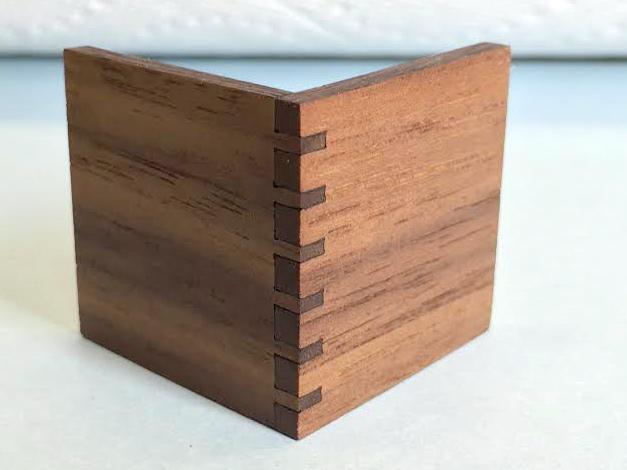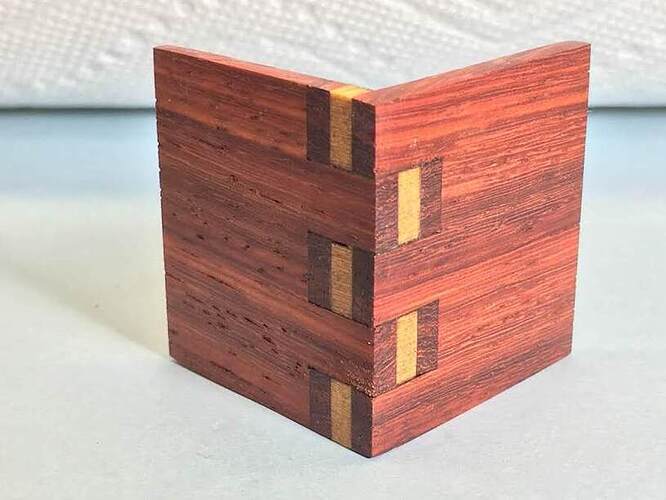Finger joints are practical and boring. Rather than fighting against them as a constraint, I tried to imagine them as design elements. I only had one general rule: Anything added should actually be part of the joint. This is about finger joints, not inlay projects. This is what I came up with.
The techniques came in a few varieties:
- Obscured: I tried to implement them in a way that would minimize or distract from the inherent blockiness.
- Highlighted: Run toward the light. Incorporate elements that would call attention to the fingers.
- Altered: Change the shape or thickness of the finger joint to give it a bit more interest.
Each of the following is an example of one or more of these techniques. All are done in 1/8" solid hardwoods. It should be noted that these are proofs of concepts. Some of them are kerf adjusted and better fit, others are rough. I was moving quickly and wanted to get a variety of ideas done in a short time.

Walnut, thin fingers on one side, thick on the other.
Padauk and yellowheart. Stack the joints with cutouts of contrasting colors.
Walnut. Extend the fingers in a radius. Adds a nice dimensionality.
Padauk/yellowheart. Half depth finger, finished with “studs” of yellowheart.
Padauk. Each finger is 15% thicker than the one above it.
Padauk club cutouts. Two views. Could be great in a playing card box and have the added benefit of letting you see if the deck is in place without opening the box.
Walnut with blue cardstock behind. Make for a little “peek” of color.
Walnut. Tiny holes in each finger. I didn’t sand these flush, I wanted greater contrast.
Walnut. Scalloped finger ends, adds texture to the joint.
Walnut, Padauk, Yellowheart. “Woven” inlay fingers. The woven portions are the actual fingers in the joint. Labor-intensive and fiddly, would adjust this before trying again.
Mahogany, Yellowheart. Hollowed-out finger slots filled with yellowheart.
Mahogany, Yellowheart. Extra gaps in the fingers filled with yellowheart studs.
Walnut checkerboard. Extra “fingers” hide the end fingers.
Mahogany, maple. This is acutally a butt joint, but could be adapted to be a finger joint easily by extending/reducing the middle “fingers” between the maple layers.
Mahogany, yellowheart. Yellowheart borders around the fingers.
Walnut pickets. Extending the fingers to points beyond the joint. Picture doesn’t do this justice, it creates an interesting optical illusion.
I haven’t even gotten into the possibilities of engraving the pieces, but that’s a whole other rabbit hole. Hopefully this gives people ideas and we start to see some more unusual joints.
(previously: Experimenting with thin finger joints)




